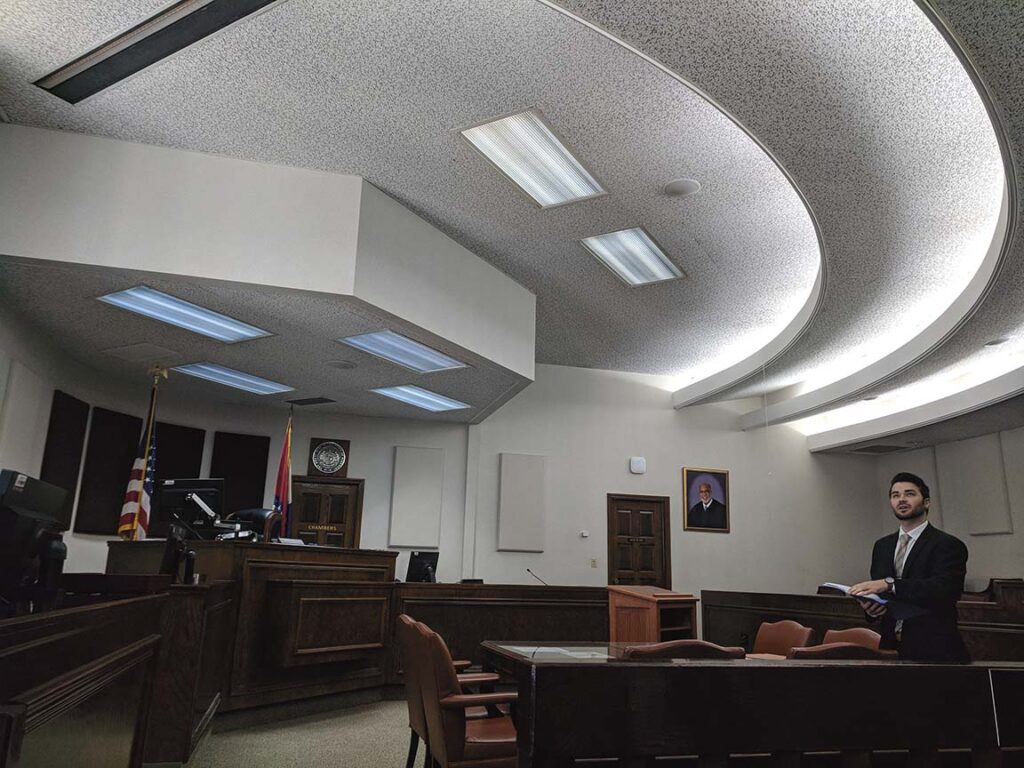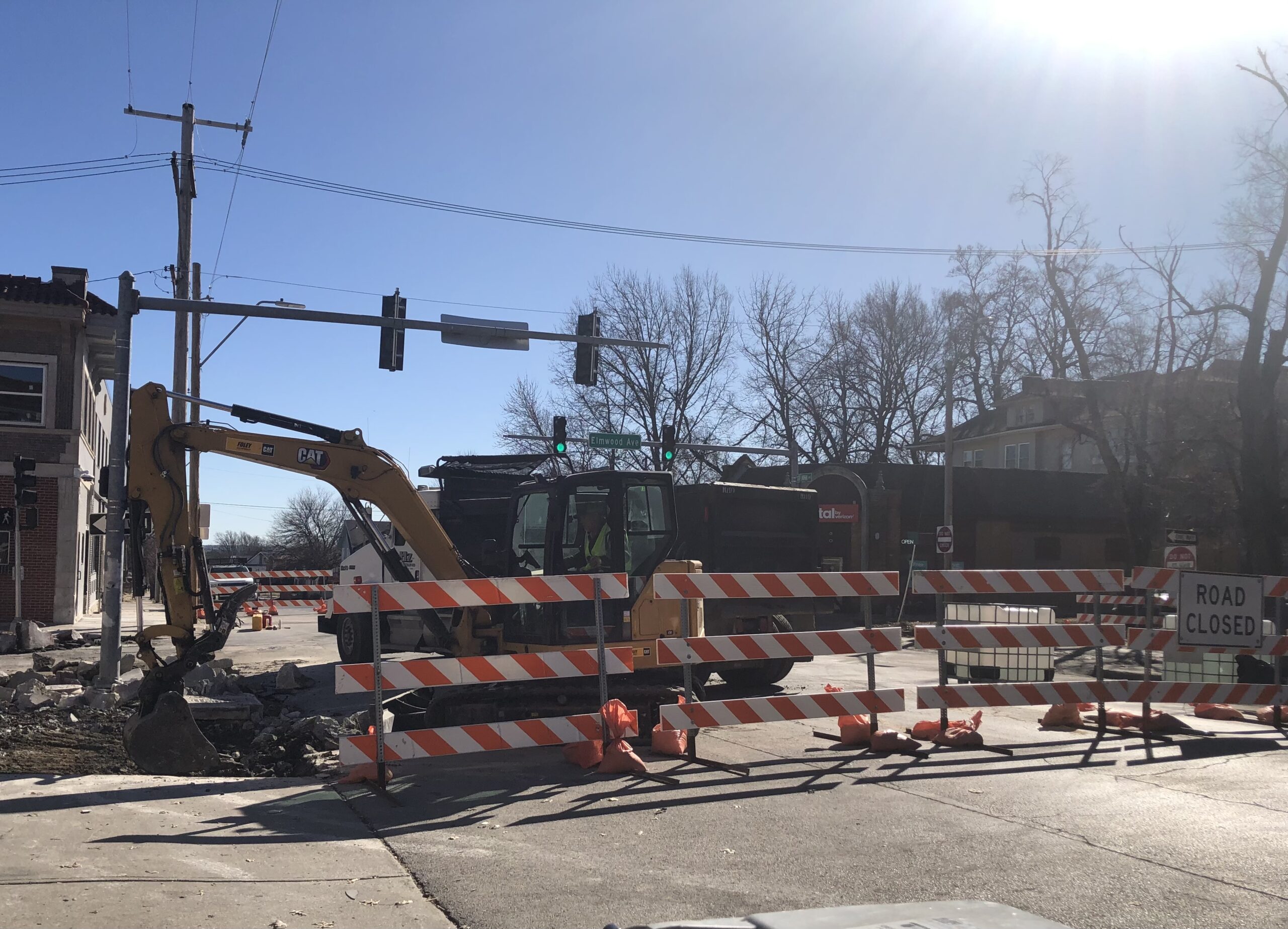
Abby Hoover
Managing Editor
In Northeast Kansas City’s historic neighborhoods, preserving the aging housing stock is a priority for those focused on affordable housing.
For neighborhoods like Indian Mound, which is bordered by Gladstone Boulevard to the north, Belmont Boulevard to the east, Independence Avenue to the south, and portions of Jackson, Kensington and Elmwood to the West, the urgency is increasing.
The Indian Mound neighborhood association, like each neighborhood in Northeast, works in partnership with Legal Aid of Western Missouri, an organization that provides free civil legal assistance to people who need it most and can afford it least.
Legal Aid serves over 40 counties in Missouri, where approximately 295,000 people live in poverty, helping them stay in their homes, escape domestic violence, secure veterans’ benefits or address many other legal challenges that go to the heart of their security and well-being.
“It’s basically providing access to legal services for low income persons in Kansas City, St. Joseph, Warrensburg and Joplin,” said Brandon Mason, Managing Attorney of West Office and Economic Development Unit. “My unit is the Economic Development Unit, and we’re really focused on neighborhood preservation and combating blight in housing, so we represent primarily neighborhoods, targeting vacant and abandoned properties and abuse of out of town owners.”
They use the legal system to either obtain repairs to properties, or to take control of abandoned properties to rehabilitate them, restore them and get families living in them again.
The primary tool they use is the Abandoned Housing Act, a state statute specific to Missouri.
“It permits certain nonprofits, and it’s almost always neighborhood associations, to serve as a plaintiff to go to court and say, ‘Court, look, this property is abandoned,’ and if the property is vacant, it has delinquent taxes, and it has nuisance conditions, 311 codes, the court can declare abandoned,” Mason said. “They’ll vest the neighborhood with sort of a temporary ownership to allow the neighborhood to go in and repair it.”
Mason said most of these neighborhood associations are volunteer-based nonprofits, so they don’t have the capital or the expertise to do these repairs.
“They partner with urban homesteaders, individuals who have been vetted by us who have a combination of income, savings, and most importantly, the desire and ability to do a home repair,” Mason said. “They’ll do all the repairs, they’ll perform all the sweat equity, and then at the end of the case, once they’re done with repairs, the court will actually issue a deed to the neighborhood, giving the neighborhood clear title to the property, and as part of the bargain of the urban homesteader fixing the property, the neighborhood deeds the property to the urban homesteader.”
Through that process, they’re able to rescue properties from out of town LLCs or defunct corporations, what Mason calls “the real gray area of ownership.”
“We can rescue that property from sitting in dilapidation and ultimately needing to be torn down,” Mason said.
In the aging neighborhoods of Northeast Kansas City, where some houses are over 100 years old, Mason knows acting in a timely manner can save much of the housing stock.
“There’s sort of that Goldilocks zone of not too hot, not too cold,” Mason said. “There’s a sort of Goldilocks set of elements required to file an abandoned housing case, you know, it has to technically be abandoned.”
They don’t usually file on properties that have just one year of delinquent property taxes, but after four years, the property will go to tax sale.
“And the issue there is if a property sits vacant for that long, it’s probably going to have been broken into,” Mason said. “If you drive down Independence Avenue, you see the remnants of broken into properties, burned out structures, you know, they’ll get vandalized. So there’s really that sweet spot of identifying the property early so that we can get to it before it’s really fallen into decay and neglect. It prevents further destruction. It allows us to actually capture the property before it is too far gone.”
Interested parties can apply via Legal Aid, either with a house in mind or not. Legal Aid determines their level of expertise in home repair, determines the size of the family, and sets expectations.
“We take their application and the property and we go to our neighborhood client and say, ‘Hey, we’ve got these Urban Homesteaders, they’ve identified this property, would you like for us to open up a case and start a formal process?’” Mason said. “Other times we, in our unit, will attend community meetings and we’ll hear from neighbors about problem properties… The neighborhood board, like in Indian Mound, will direct us to send some letters and find out what’s going on trying to get the property secured. If we don’t have a response and it appears Abandoned Housing Act eligible, then we might report that property to our interested applicant pool for Urban Homesteaders.”
It’s not a one size fits all approach, and if there’s more than one party interested, the neighborhood board will work to find the best fit.
Indian Mound Neighborhood Association President Patricia Hernandez, who appreciates living near family members in the community, returned to the neighborhood she grew up in.

x BRYAN STALDER
“I want our neighborhood to thrive and do well and be clean, I also don’t want to lose what made this neighborhood,” Hernandez said. “This is a working class neighborhood. These are folks that had to go and work during the pandemic. These are folks that lost family members during the pandemic, and for them to maybe lose their family homes, that devastates me.”
For Jimmy Fitzner, a lifelong resident of Northeast who recently joined the board, the neighborhood’s work with Legal Aid was a big factor in him wanting to serve. He sees Urban Homesteading as a way to make real change in the community.
“We can organize trash pickups and things like that, but man, taking somebody to court and making sure that you can get a family into a house just seemed like something that is very, very beneficial to our neighborhood,” Fitzner said.
Not meeting in person during the pandemic meant the loss of engagement and volunteers for the neighborhood. Without Legal Aid’s continued work, the association would have come to a standstill.
“[Mason] saved our neighborhood association because we were able to still place folks into homes during a pandemic and that’s unheard of,” Hernandez said. “Just watching it grow – and we can only do so many a year, which is the nature of the beast – but I’m just so thankful to be able to have that within our neighborhood.”
As they see the continued rise in housing prices creeping further east from downtown, the board is conscious of families who may be priced out of the neighborhood, elderly people who can’t afford to age in place, and renters who can’t save enough to purchase a home.
“If our neighborhood’s median income becomes too high, we could lose the services of Legal Aid’s Urban Homesteader program, and that’s something that actually kind of hit me right now,” Hernandez said. “And so that’s something that the board is definitely going to have to discuss further because we’re going to have to figure something else out, right?”
In addition to saving vacant homes, they’re excited by the prospect of a tiny home project that could be coming to the neighborhood soon, and sustainable infill housing like the one Mattie Rhodes completed on North Topping last year.
Four Urban Homesteading projects are in the works right now in Indian Mound, and they have more interested parties waiting to secure properties.
“It saves a house right before it’s about to get demolished, and that’s what’s really detrimental, that’s when you’ve got to start from scratch,” Fitzner said. “But if there’s a house even in some significant level of disrepair – we have a lot of houses in Northeast Indian Mound, a lot of little homes, and they’re not gigantic… Being able to fix those up now saves a lot of money down the road and that’s something Brandon was talking about a couple meetings ago.”
“We need to do a better job at reaching across language barriers, because a lot of our folks are Hispanic speakers that are Urban Homesteaders, so that’s another thing that has definitely been on my list of priorities is trying to reach out to those folks instead of having them come to us,” Hernandez said. “They do keep their homes up to date and clean and it encourages their neighbors to do the same. So I will say that once that house becomes not so much of a blight that just alone adds so much to the community.”
Legal Aid primarily works with single family residential properties. The Abandoned Housing Act permits cases to be filed against multifamily properties like large apartment buildings, and Mason would like to see them doing more of that.
However, he said one of the challenges with apartments is, as the structure gets bigger and more complex, the cost to rehabilitate it goes up. In those cases, it’s frequently not an Urban Homesteader who would take on that sort of task, but rather a larger for-profit rehabilitator.
The Indian Mound Board has requested Legal Aid open cases on a few multi-family housing buildings, like the apartment at Scarritt and N. Lawn, which recently suffered a fire, and the Georgia on Independence Avenue, which has two interested parties.
“We have actually already mailed demand letters to the owner, asking them to respond to let them know their intentions with the property,” Mason said. “And that’s usually the first step in pursuing any kind of litigation, whether it be an abandoned housing case or nuisance case. But you know, in either case, the goal of either litigation is to see the property stabilized and restored.”
Legal Aid works with around 45 neighborhoods in Kansas City, almost exclusively on the East Side, all the way from Northeast to Ruskin, and the Westside.
“We love Brandon Mason, he has been just like a true light and in this COVID time he’s always been there when we need him as a neighborhood, and just Legal Aid in general, our partnership is so invaluable,” Hernandez said. “I think that Urban Homesteading has definitely been our number one thing to keep folks housed.”
In the fiscal year of 2021-2022, which was May of last year into May of this year, Legal Aid of Western Missouri opened 82 cases, closed 200 cases, and filed 35 lawsuits.
“Legal Aid is a really large firm that does a lot of things, and so if they have a legal question or need representation, they should reach out,” Mason said. “If our team can’t help them, we can send them over to the team that can. I would just remind people that if there are any properties on their block or in their neighborhood that they think are a problem and that they would like their neighborhood board to address that they can contact their neighborhood association board or our unit directly to try to get some action taken.”
If you or someone you know is interested in the Urban Homesteading program, contact your neighborhood association or visit lawmo.org.



















